- manometer
- pump
- calipers
The air pressure in the tires of the front and rear wheels should be, MPa (kgf/cm2):
155/70R13 | 0,19 (1,9) |
165/70R13 | 0,2 (2,0) |
175/70R13 | 0,19 (1,9) |
Check tire pressure periodically. High or low pressure leads to premature tire wear, worse handling and stability. In order for the tires to wear evenly, rearrange the wheels every 30,000 km in accordance with the diagram. Also, every 30,000 km, balance the wheels and adjust the angles of the front wheels. To do this, contact a specialized workshop.
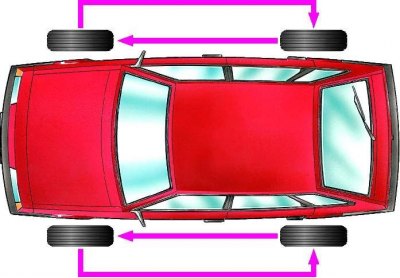
Wheel swap diagram.
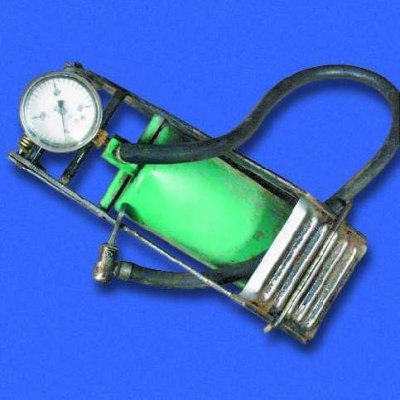
We recommend using a foot pump with a built-in pressure gauge.
Attention! Carry out all wheel repair work in specialized workshops. Check that the wheel is balanced after repair.
Warning! Using tires with worn tread can lead to an accident.
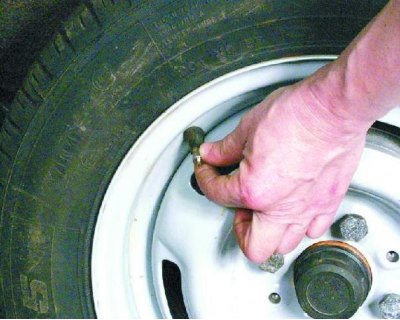
1. Unscrew the cap from the spool. If the cap is lost, install a new one.
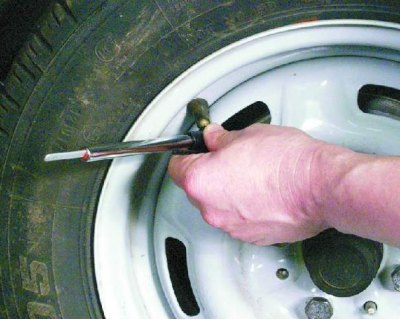
2. Connect a pressure gauge to the spool and press it down. If the pressure is out of range, add or bleed air.
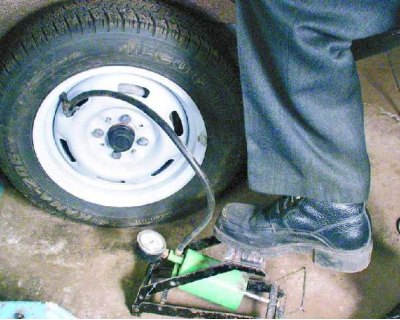
3. If the pressure is less than required, connect the hose tip to the spool and pump air, controlling the pressure on the pressure gauge on the pump.
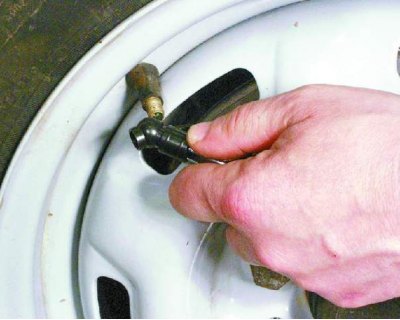
4. If the pressure is more than required, press the special protrusion of the pressure gauge on the spool and bleed the air from the tire. Measure the pressure with a manometer. By repeating these operations, bring the pressure to normal.
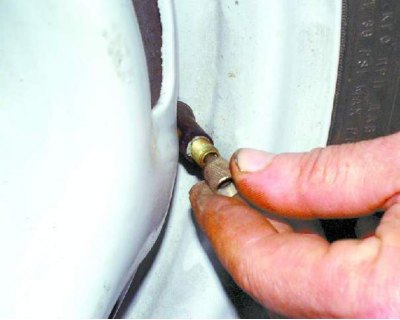
5. If you notice that the air pressure in the tires is constantly dropping, try tightening the spool.

6.To check the tightness of the spool, wet its hole. If air bubbles appear, replace the spool.
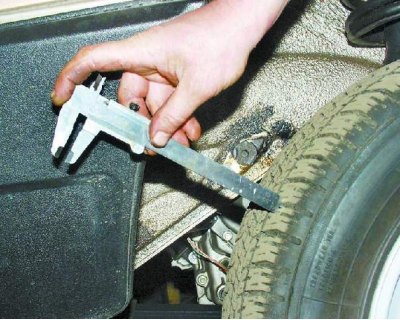
7. Measure the remaining tread depth with a caliper. If the tread depth is 1.6 mm or less, replace the tire.
